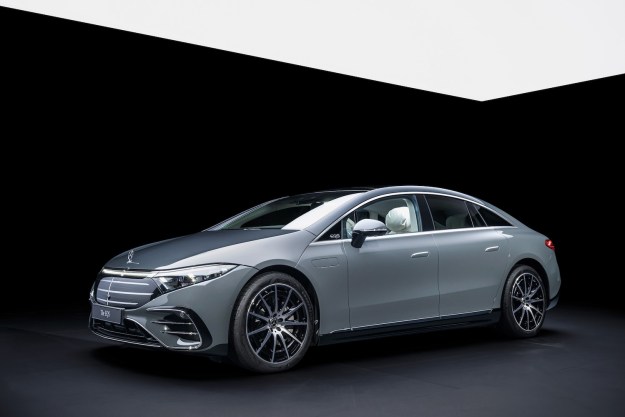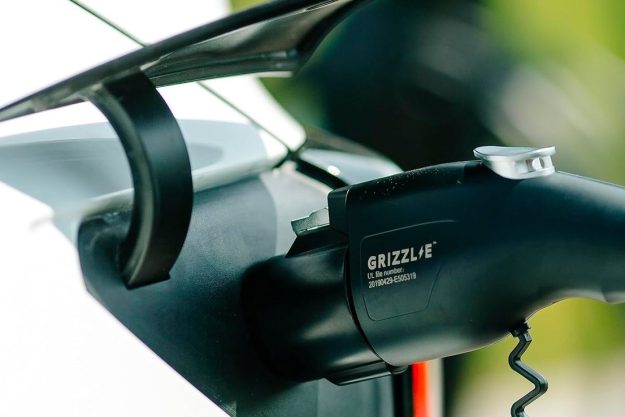With the HR-V, Honda took the fun Fit platform and mixed in a skoch of CR-V versatility. If you don’t need to get there fast, the HR-V is a great way to get around.
Honda’s new HR-V has all the elements of a great car. It’s based on the Fit (which we love), but with more room, more power, and more features than its more svelte cousin.
The crossover is also true to its name, as it occupies the middle ground between the aforementioned Fit and the rock steady CR-V. As such, it adds all-wheel drive and increased interior volume to the spunky subcompact platform, while keeping fuel efficiency and safety securely on the front burners.
But is it a great car? Is it more than the sum of its parts, or a bit of an anti-gestalt? I flew down to Miami Beach to find out.
Lifestyle
At the HR-V’s first drive event in Florida, Honda introduced the vehicle as a “lifestyle car.” Right off the bat, that tells you a few things.
Number one, style and image are important aspects of this vehicle, as a key demographic (single Gen Y folks with developing careers) has been carved out. Consequently, the HR-V flaunts bold, sporty looks and a coiled stance that fits in perfectly with packs of youths.
The theme continues inside as well, with five-mode ‘Magic Seats,’ a 7.0-inch touchscreen (EX and EX-L Navi), a sleek, user-friendly dash, and a fair amount of soft touch materials for an ‘I just got my own desk’ starting price of under $20,000. It’s no S-Class, and some materials do feel chintzy, but it’s fine for the price point.
Number two, since this is a lifestyle car, the HR-V has to go places and do … things. Because no matter what Netflix tells you, sitting alone at home all day isn’t the most exhilarating way to pass the time.
To accomplish this, Honda gave the crossover 6.7 inches of ride height, 100.1 cubic feet of passenger volume, 57.8 cu. ft. of cargo volume, and available all-wheel drive. The aforementioned Magic Seats — a carryover from the Fit — offer normal, split, tall, utility, and lounge modes. The layouts are mostly self-explanatory, but the versatile cabin can carry luggage, bikes, small furniture, dogs, surfboards, and most other adventure items quite easily.
Number three, which is a less joyful point than the others, is that performance takes a bit of a backseat. ‘Lifestyle car’ and ‘driver’s car’ seem to occupy opposite points of the automotive spectrum, so a pulse-quickening motoring experience isn’t really the point here. Still, it’s worth a mention.
Driving impressions
While the HR-V is based on the Fit, it equips the larger, more powerful 1.8-liter four-cylinder from the Civic, which makes 141 horsepower and 127 pound-feet of torque. As you may expect, it’s mated to a continuously variable transmission (CVT) on most trim levels, which brings us to the car’s biggest flaw.
The HR-V is not a driver’s car, but it is not meant to be.
Because the four-banger doesn’t have a lot of punch, the CVT is constantly searching for the appropriate rev range. The rubber band comparison is often made when discussing gearless transmissions, and I found it appropriate here. When driving up a freeway incline outside of Miami (yes, there are a few), the HR-V’s tachometer seemed glued to 4,000 rpm while the engine howled in protest. Worse yet, I wasn’t really going anywhere.
Thankfully, the vehicle is offered with a six-speed manual, which completely transforms the driving experience and is much more pleasurable overall. There’s another problem, though, as the manual is offered only in front-wheel drive models.
Buyers will have a tough choice to make, then, as the CVT boasts better fuel economy (28/35/31) compared to the manual (25/34/28) with FWD, but is less enjoyable to operate. If you want all-wheel drive (which returns figures of 27/32/29), the transmission choice is made for you.
As far as the ride is concerned, the Mexican-built crossover feels very, well, Honda-like. In other words, it walks the line between sharp and comfortable very carefully, trading some ride quality for sporty handling through the bends. And while the HR-V zipped through moderate corners well with organic steering feel, the ride could be a tad stiff for some.
Tech and standard features
So, the HR-V is not a driver’s car, but it is not meant to be. What it does set out to do, however, is ferry its adventurous occupants along in style, with modern tech offered at a fair price. Viewed through that metric, the HR-V is much more successful.
DT Accessories Pack
Up your game and the get the most out of your gear with the following extras, hand-picked by our editors:
Allen Sports Deluxe 2-Bike Trunk Mount Rack ($40)
The HR-V has all-wheel drive, but it can’t go everywhere. This rack will allow you to bring some trail-ready transportation along for the ride.
Cobra CDR 900 Dash Cam ($100)
Cobra’s ‘Drive HD’ dash cam can record all of your adventures in 1080P/1296P. Read our full product review here.
Apple Certified Lightening to USB Cable ($9)
The Honda HR-V offers 2 USB ports, and this adapter cable can allow you to charge iPhones, iPads, and iPods.
EX and EX-L Navi models come with a 7.0-inch touchscreen display, the latter of which offers — you guessed it — navigation. There’s also a push-button start, electric parking brake to free up cabin space (the first application on a Honda vehicle), HDMI display audio interface, two USB ports, and tons of storage compartments.
It’s also safe, as a multi-angle rear camera and expanded view driver’s mirror come standard. Honda’s ‘LaneWatch’ display system (EX and EX-L Navi) display the passenger side roadway on the vehicle’s screen when signaling. Furthermore, the ‘Advanced Compatibility Engineering’ body structure aims for top collision ratings.
Conclusion
With most of the ingredients of a chef d’oeuvre, and an experienced cook behind it, the Honda HR-V is likely bound for success. Its biggest blemish is that it doesn’t perform well ….but it isn’t trying to. That said, it hits the marks most everywhere else. If we’re talking daily drivers with good value-per-dollar, this car is tough to argue against.
But the question remains: Will it be as much of a home run as its Fit or CR-V siblings? We’ll find out when the 2016 model goes on sale this spring.
Highs
- Starting price under $20,000
- Small outside, big inside
- 35 mpg highway on 2WD models
- Sporty styling
Lows
- Performance (there isn’t much of it)
- CVT powertrain can be noisy







